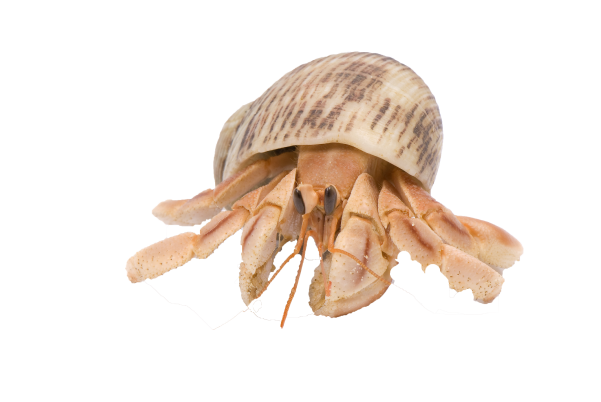 |
| Printable Version: Fluker's Hermit Crab Care Sheet and Product List (PDF) |
Download |
| Video Tutorial: Fluker's Hermit Crab Setup and Care Tips with Dr. Mark Mitchell (YouTube) |
Watch Now |
| Video Tutorial: Fluker's Hermit Crab Sand Substrate |
Watch Now |
Hermit Crab Habitat Setup and Care Guide |
|
Hermit crabs make great pets! Our habitat setup guide and care tips cover enclosure, substrate, temperature, humidity, lighting, accessories, diet, nutrition, behavior, handling, and safety. Before bringing home your new hermies, it’s important to have all the supplies you need such as housing, accessories, and food. This will ensure that your hermit crabs have an easy and healthy transition to your care. Quick Facts● Hermit crabs are intelligent, entertaining, and make great pets. ● Hermit crabs are social animals, they do great in pairs or social groups even though their name states otherwise. ● The average adult size is between 2-6 inches long. ● With proper care, hermit crabs can live 10 years or longer. ● They live on land, not in water. |
EnclosureHermit crabs need plenty of space to thrive! For two small crabs, we recommend at least a 10-gallon plastic or glass tank with a screen top to prevent escape, but more room may be required as they grow. Avoid placing the tank in direct sunlight, near windows of drafts, or in any place with extreme temperatures. |
SubstrateHermies are natural diggers, and it’s important that you provide enough deep moist sand to protect your crabs during the molting process. The proper amount is three (3) times deeper than the height of your largest crab. Avoid calcium carbonate sand as it doesn’t retain moisture and can stick to your crab’s legs and abdomen. |
Food & Water BowlsYou’ll also need to add two water bowls and a smaller food bowl. The water bowls should be large enough for crabs to submerge in, but not so big that they get stuck. Fill one with fresh water and one with saltwater (make sure to dechlorinate both). Place a sea sponge in each dish to allows crabs to get in and out safely and to help maintain humidity. |
AccessoriesHermit crabs love to climb and hide. Decorate their home with branches, half logs, driftwood, caves, and shells. Add some Catappa leaves for them to hide under and nibble on. And don’t forgot to keep extra growth shells in their enclosure for when they need something bigger. |
Temperature & HumidityThe temperature inside the enclosure should always be between 72 and 82 degrees. Use a quality tank heater or clamp lamp to maintain temperature. Hermies also need moist, humid air to breathe properly. Mist your tank with dechlorinated water to keep relative humidity between 60-80%. |
Diet & NutritionHermit crabs are omnivorous scavengers.Commercially prepared hermit crab food has a proper balance of vitamins and minerals for your crabs. Pelleted foods can be fed once a day and should be crushed especially for smaller crabs. Feed at night and remove uneaten food daily. Hermies need a lot of calcium to support the health of their exoskeleton especially during molting, so we recommend adding calcium vitamin supplements to their food. |
Handling & SafetyHermit crabs can be vulnerable while molting, because their bodies are soft. During this time, isolate them from their roommates and be careful not to drop them onto a hard surface; doing so can injure or kill them. Never release hermit crabs into the wild. They aren't likely to survive, and they can harm the local ecosystem. If you notice any of these symptoms of illness or distress, contact a veterinarian: increased appetite or activity, staying outside of the shell, excessive molting, lost claws or limbs, strong odor from inside the shell. |
